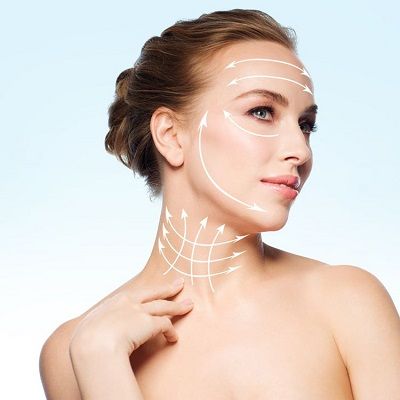Facelift surgery, also known as rhytidectomy, has become increasingly popular in Oman as individuals seek to rejuvenate their appearance and combat signs of aging. This advanced cosmetic procedure of Facelift Surgery Oman aims to tighten and smooth the skin, creating a more youthful and refreshed look. With various techniques available, it's essential to understand the different types of facelift surgery to make an informed decision about which approach is best suited for your needs.

Traditional Facelift Surgery
Overview of Traditional Facelift
Traditional facelift surgery is one of the most comprehensive methods for addressing significant facial aging. This procedure involves making incisions around the hairline, extending down to the ears, and sometimes into the scalp. The skin is then lifted, excess fat is removed, and the underlying muscles are tightened. This method is ideal for individuals with more pronounced signs of aging and sagging.
Benefits of Traditional Facelift
- Long-Lasting Results: Provides a more dramatic and long-lasting improvement in facial appearance.
- Comprehensive Treatment: Addresses multiple areas of the face simultaneously, including the jowls, neck, and cheeks.
- Effective for Severe Sagging: Best suited for individuals experiencing advanced skin laxity.
Considerations
- Recovery Time: Typically involves a longer recovery period compared to less invasive techniques.
- Scarring: Incisions are strategically placed to minimize visible scarring, but some scarring may still occur.
Mini Facelift Surgery
Overview of Mini Facelift
A mini facelift is a less invasive alternative to the traditional facelift. It targets the lower face and neck, offering a more subtle improvement. The procedure involves smaller incisions, often confined to the area around the ears, allowing for a quicker recovery and less noticeable scarring. This technique is ideal for individuals with mild to moderate signs of aging.
Benefits of Mini Facelift
- Quicker Recovery: Shorter downtime compared to a traditional facelift.
- Less Invasive: Smaller incisions result in minimal scarring and a faster healing process.
- Natural-Looking Results: Provides a refreshed appearance without the dramatic changes associated with more invasive methods.
Considerations
- Limited Scope: Primarily addresses the lower face and neck, making it less suitable for those with significant sagging or extensive aging concerns.
- Not a Complete Solution: This may require additional procedures or touch-ups for more comprehensive results.
Endoscopic Facelift Surgery
Overview of Endoscopic Facelift
Endoscopic facelift surgery utilizes advanced technology to perform a minimally invasive procedure. Small incisions are made in the hairline, through which a tiny camera (endoscope) is inserted to visualize and manipulate the underlying tissues. This technique allows for precise adjustments and lifting without the need for extensive incisions.
Benefits of Endoscopic Facelift
- Minimally Invasive: Requires only small incisions, reducing the risk of scarring and promoting quicker recovery.
- Enhanced Precision: The use of an endoscope allows for accurate and targeted lifting.
- Shorter Recovery Time: Patients typically experience less downtime and discomfort.
Considerations
- Technique Limitation: Best suited for individuals with less severe aging; may not address extensive sagging or deep wrinkles.
- Specialized Expertise Required: Requires a surgeon skilled in endoscopic techniques for optimal results.
Non-Surgical Facelift Options
Overview of Non-Surgical Facelift
Non-surgical facelift options have gained popularity as less invasive alternatives to traditional facelift surgery. These methods use various techniques such as dermal fillers, Botox, and radiofrequency to achieve facial rejuvenation without the need for surgery. While not a substitute for surgical facelifts, these treatments can provide noticeable improvements with minimal downtime.
Benefits of Non-Surgical Facelift
- No Anesthesia Required: Most non-surgical treatments are performed under local anesthesia or without any anesthesia.
- Quick Procedure: Typically involves minimal to no downtime, allowing for immediate return to daily activities.
- Customizable: Treatments can be tailored to target specific areas of concern.
Considerations
- Temporary Results: Effects are often temporary, requiring periodic maintenance treatments.
- Limited Improvement: May not offer the same dramatic results as surgical options for more advanced aging signs.
Choosing the Right Facelift Surgery
Factors to Consider
When choosing the right facelift surgery in Oman, several factors should be considered:
- Severity of Aging: Determine the extent of aging signs and sagging to choose the most appropriate technique.
- Desired Results: Consider the level of improvement you wish to achieve, whether subtle or dramatic.
- Recovery Time: Evaluate the amount of downtime you can accommodate and choose a technique that aligns with your lifestyle.
Consultation with a Surgeon
Consulting with a board-certified plastic surgeon in Oman is crucial for selecting the right facelift surgery. During your consultation, the surgeon will assess your individual needs, discuss your goals, and recommend the most suitable technique based on your unique facial anatomy and aging concerns.
Conclusion
Facelift surgery in Oman offers a range of options to address various signs of aging and achieve a more youthful appearance. From traditional facelifts to minimally invasive techniques and non-surgical alternatives, understanding the different types of facelift surgery can help you make an informed decision about which approach is best for you. Consult with a qualified plastic surgeon to explore your options and discover the most effective solution for your aesthetic goals.
